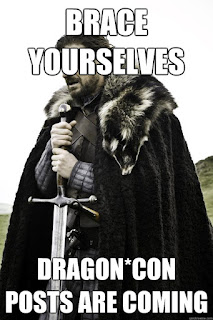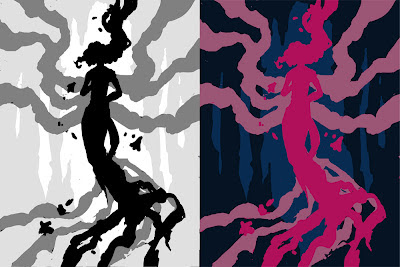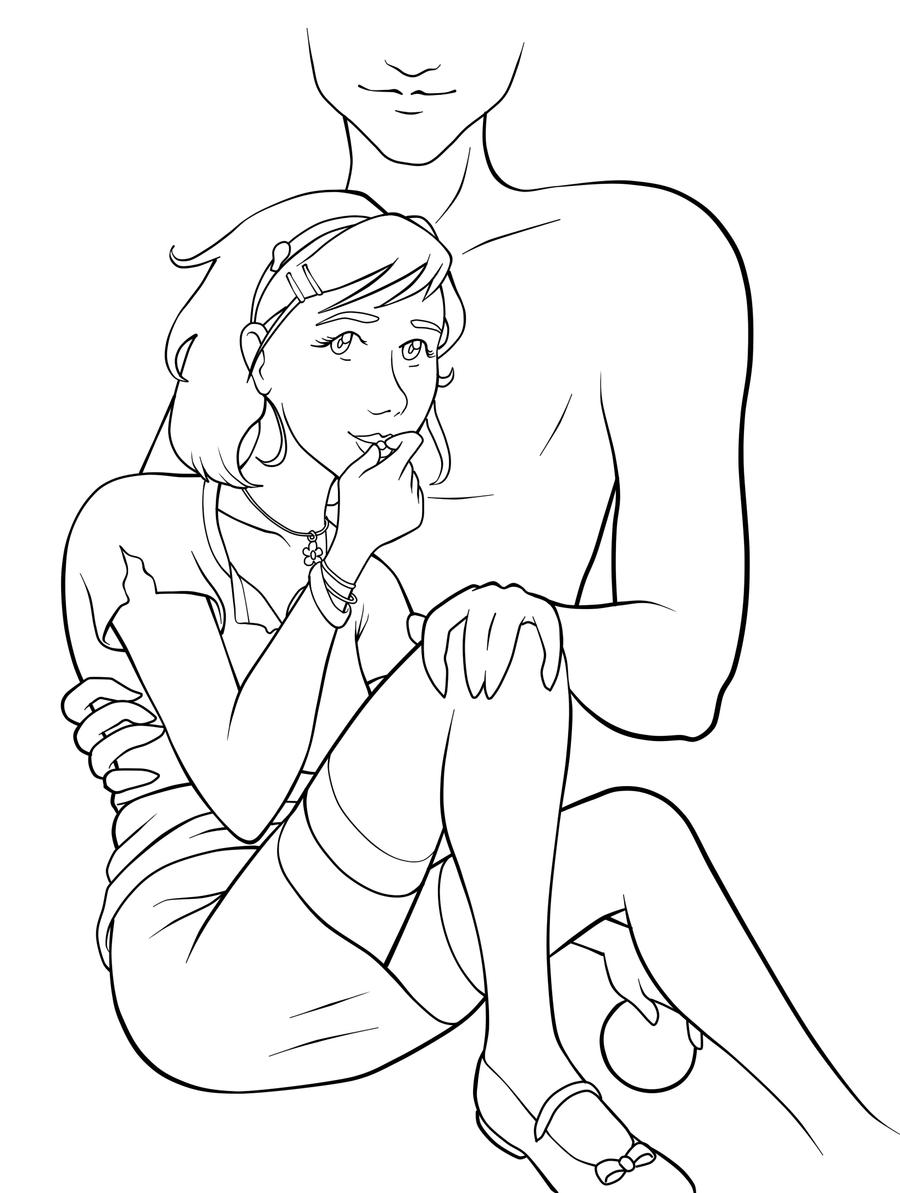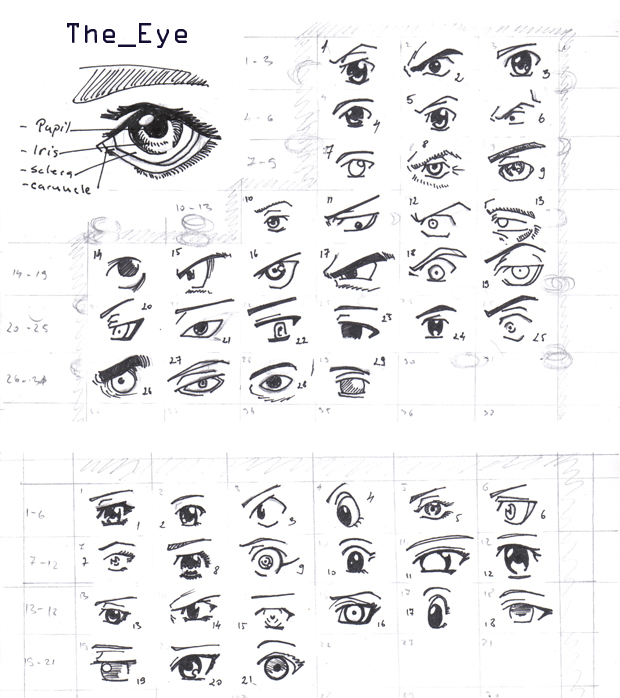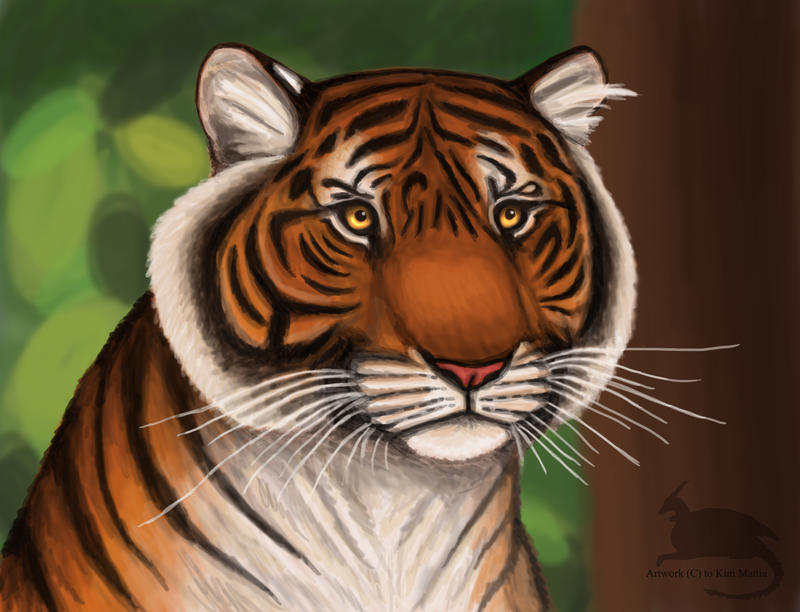It’s a cold fear that sinks into the pit of your stomach. You’ve just gotten a request for a commission you’ve been hoping will come for a long time. You know the one. The job that’s not a $10 portrait, but a job that is remotely in the price range the GAG guide says you should be charging. You calmly send your reply and state your price and hope that you aren’t scaring away your potential client with a garishly high price that is sure to convince them never to work with you again. You’re a dime a dozen. Any artist can do your job! So you quote your price lower before you even begin just so they realize what a deal they’re getting and stick with you.
 |
| Talking SRS BIZNESS today. |
I’ve been dealing with this fear and second-guessing of myself for a long time since I decided to get a little more serious about my commission rates some years ago. Gone are the days of charging $10 commissions on DeviantART just to make a little extra pocket change to attend my favorite con. Commissions, for me, have become a matter of paying bills. I can no longer afford my previous low rate when I have to be the responsible adult and pay my own loan bills, credit cards for bad credit, etc. When one needs to make a living instead of pocket change, those prices aren’t just low, they’re simply impossible! (Unless you have a day job to fall back on, that is) By my math, I need to be making $40 an hour to even afford a decent living as a self-employed artist paying for my own benefits. You can guess how many times that’s happened…and it’s not even because people aren’t willing to pay, though that is a part of it.
I fear those days of accepting less before I was truly ready to be paid for my work ruined me. I became too accepting of being paid too little. I HAD to be cheap to be competitive. (Big Mistake Number One) Years of doing this has resulted in my present self being literally scared I’m charging too much for my work. I get a lump of fear in my throat when I quote someone, fearing that the price will be too high and they’ll say no. I have to willfully repeat to myself “Another job will come along. Do not panic.” I have to trick myself into thinking that YES. I am worth it! YES there ARE people out there who are willing to pay what I quote them. It’s embarrassing to admit this as a professional, but it’s something I’ve been willfully trying to change in myself for the past few years. Since I’ve adopted this attitude, I have realized this isn’t just a half-truth I’m tricking myself into. The people who connect with my work have found me and hired me and I’m working on making that a more regular occurrence!
One strategy that has helped me mitigate these fears with my clients has been to quote them the average price range for their job as provided in the GAG guide. This helps the client, who is usually ignorant of such industry standard rates, to know what they should be paying an artist. It also helps me feel justified in my asking price. Most clients don’t want to willfully underpay anyone. They generally understand that times are difficult for all right now and are willing to negotiate a middle ground for a price that makes everyone happy. If the job falls through, than at least they’re now educated in what most professionals will ask for as a rate and have more respect for your work being perceived as expensive, and therefore more professional than someone else charging pennies for what is generally going to be lesser quality work. Your rates can and will determine your perceived value as an artist and balancing that notion with your own honest impression of your skills is a balancing act one has to learn when becoming a professional.
Then there is the matter of other artists who have the same fears I do, who go about charging less for their work when they should be charging more. It’s a free country, so you can do this, right? Technically, yes, but just remember that when you as an artist charge less than you’re worth, you cast the false impression to your customers (and anyone they might refer to you) that the perceived value of art, as a whole, is less than what it should be. Lowballing prices cheapens the worth of art as an industry and makes it that much more difficult for all artists to ask a fair price. It’s an epidemic of fear and low self-worth we live in as artists and we need to face this as a community by encouraging and educating one another.
Remember, we are worth it. Every artist is unique with their own expression, experience, and execution that forge their professional identity. Earning pocket change is fine, but remember to raise your prices and be fearless doing so once your work improves. Remember also that it is easier to lower prices than it is to raise them.
Better yet, save accepting commissions for when your skills are more developed so that you can be serious about your asking price from the get-go and avoid falling into the pitfalls that can come about from charging too cheaply. Spend the time you would be working on pocket change commissions on developing a portfolio instead, which will help you to get a better paying job in the long run.
This is the advice I wish someone had given me years ago when I first got the notion in my head that I’d like to make a living drawing pretty pictures and now I’m giving it to you.
This will be my last post for a while with DragonCon and commissions sucking up all my time and what a doozy it was! I’d like to know if others share my fears? How have you dealt with them? Discuss in comments!
